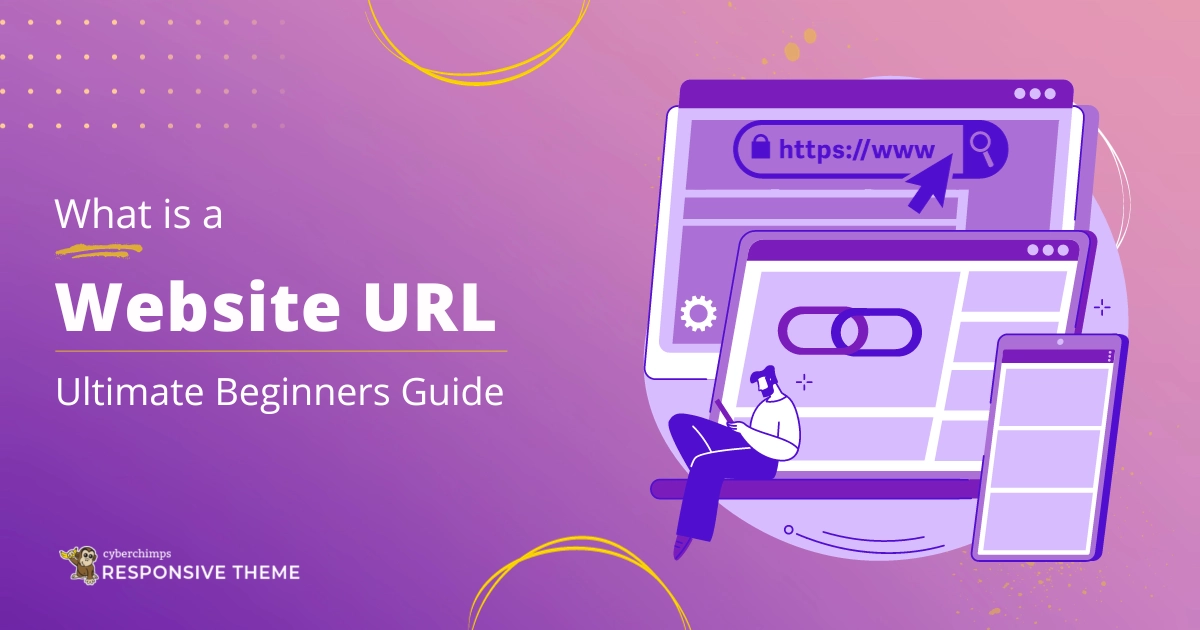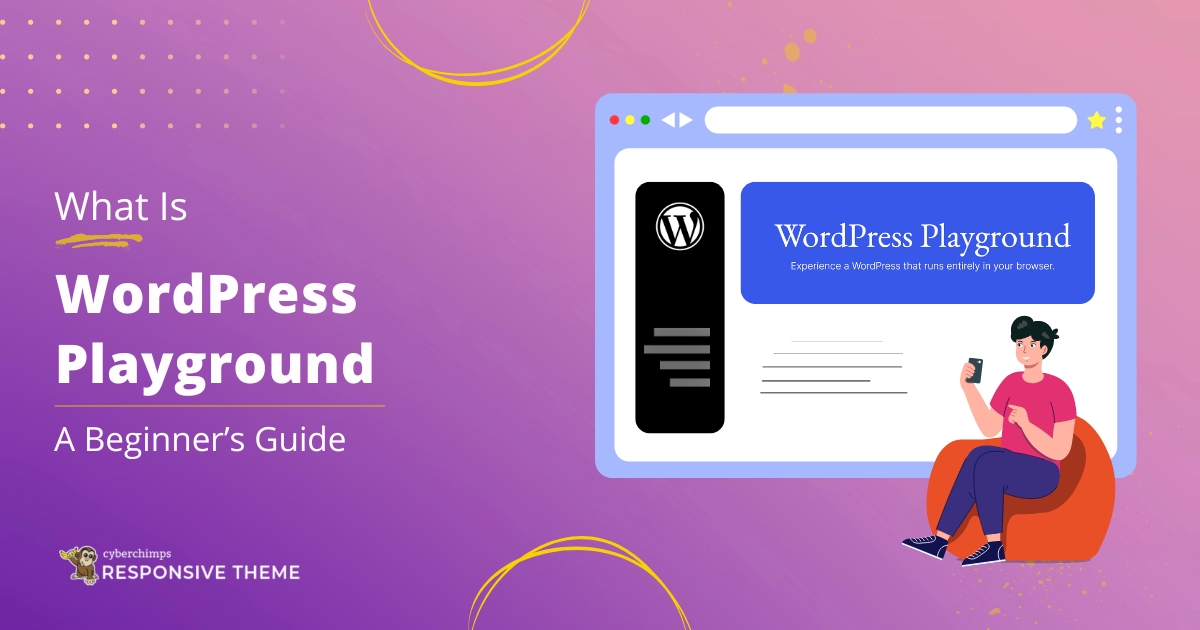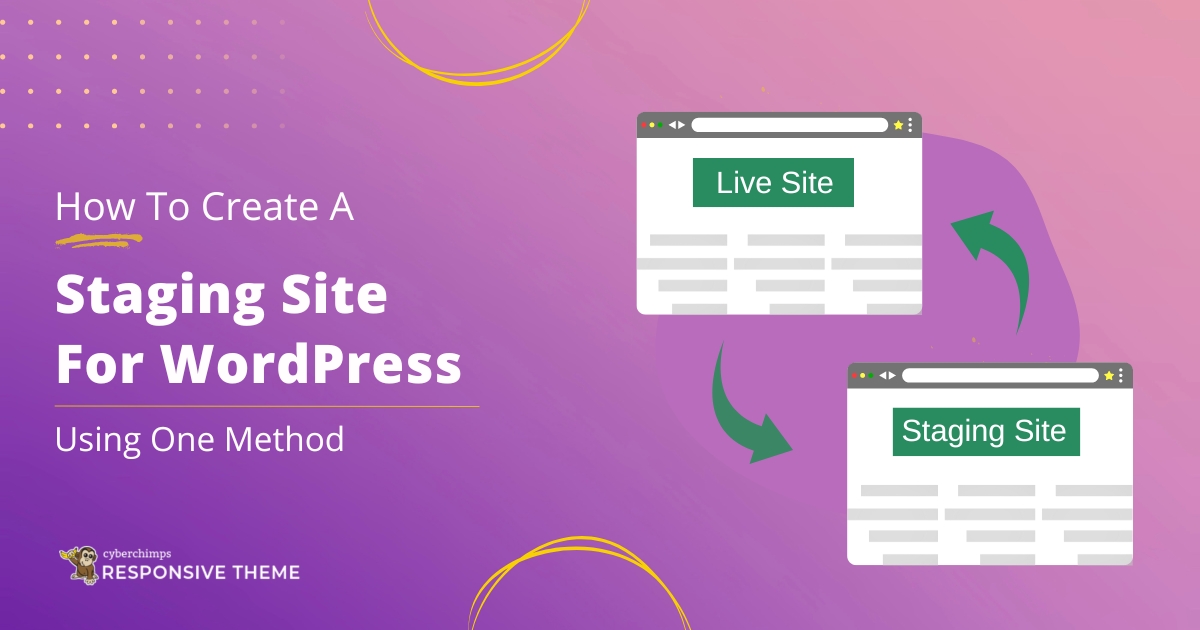Most of us here would have already come across the term “URL”, but do you know what it is and how it affects SEO?
Just like your home has an address, websites and web pages have addresses, too. These website addresses are known as URLs.
When you click on links or type in your browser, they assist your computer in locating and displaying the appropriate web information.
Here, in this article, we’ll cover and provide you with a complete guide on what a URL is.
So, let’s get started!
What is a URL?

URL, also called permalink in WordPress, stands for Uniform Resource Locator. It’s a web address that specifies the location of a webpage or file on the internet.
Every URL consists of multiple parts, and how you build your URL will affect your site’s security and Search Engine Optimisation (SEO).
In the next section, we’ll be covering the major components of a URL.
Components of a URL
The five main components of a URL are the protocol, domain, path, query, and fragment.
Let’s have a closer look at them.
Protocol
The first part of any website URL consists of a protocol that specifies how data is transferred to your computer from servers and web pages.
The most common protocols are “HTTP” and “HTTPS,” which can be identified by looking for a colon followed by two forward slashes.
http://cyberchimps.com/
https://cyberchimps.com/
Difference Between HTTP vs HTTPS
The “s” in the https indicates that the website has an SSL security certificate, which means that the entire website is encrypted to improve security.
As a result, individuals who submit their personal information on an HTTPS website can be assured that their data is protected and cannot be accessed by unauthorized parties.
FTP (for files) and Mailto (for mail) are examples of other protocols.
Domain
The second part of the URL is the domain name. This part identifies the website you are on.
The domain name consists of a website name and a top-level domain (TLD).
TLD is the last part of a domain name, typically after the “dot” (.) in a URL.
Examples of TLDs include:
When you combine the website name and the TLD, you get a domain name like cyberchimps.com.
The most common TLD is .com, making it easy for users to remember. However, consider using .edu or .gov to add an air of authority to your website.
It is advisable to avoid using TLDs such as .biz or .info as they tend to receive less website traffic and may appear as spam.
Path (a.k.a The Slug)
The third part of the URL is called the path, sometimes called the slug in marketing.
The slug tells a web browser which page to visit within a specific website. It’s the part that follows the TLD, like:
https://cyberchimps.com/blog/
An SEO-friendly slug is a short, descriptive, and relevant one that helps website users and search engines understand the content of a web page.
Query
The fourth part of the URL is called the query. It’s used when we want to obtain additional information about a resource or modify its behavior.
The query starts with a question mark (?) and includes one or multiple key-value pairs separated by ampersands (&).
Fragment
The last part of the URL is the fragment. It’s a part of the resource that the browser can directly access, such as #section or #top.
The fragment starts with a hash sign (#) and usually refers to an anchor or an identifier within the resource.
Here is an example of a URL with all its components:
[https://www.cyberchimps.com/blog/what-is-a-url?lang=en#summary]
Characters Allowed in URLs
The World Wide Web Consortium (W3C), has defined a set of characters that can be used in a URL.
The specifications include lists of reserved and unreserved characters.
Reserved Characters
URLs have special characters that cannot be used as part of the URL, as they have a specific meaning. They are used to separate different parts of a URL and also to encode special characters in it.
These characters are:
- ? (question mark): Differentiates the URL path from the query parameters.
- & (ampersand): Separates different query string parameters.
- = (equal sign): Gives query string parameter values.
- # (hash or fragment): Indicates a particular webpage section.
- / (forward slash): Divides various URL segments.
- : (colon): Denotes the protocol in protocols like http:// or https://.
Unreserved Characters
Unreserved characters are those that can be used in a URL without encoding because they have no special meaning.
Examples of unreserved characters include:
- Alphanumeric characters: A-Z, a-z, and 0-9.
- – (hyphen): Used as a literal character in URLs.
- _ (underscore): Also used as a literal character.
- . (period): Often used in domain names and file extensions.
Steps for Creating an SEO-Friendly URL for Your Website
Here’s how to perfect your URL to align with our SEO tips.
Step 1: Include the Target Keyword in the URL
To optimize your website for SEO, use your target keyword in the URL.
For example, if you want to use the keyword “WordPress Themes” in your URL, it should look like this:
https://www.cyberchimps.com/wordpress-themes
Using your keyword in the website’s URL is crucial to help Google understand its relevance.
It also helps website users quickly understand what your web page is about.
Avoid Keyword Stuffing
Keyword stuffing is the practice of overusing your keyword to appear faster in search results.
It’s a “black hat” SEO practice that Google disapproves of and may decrease your visibility in search results if you get caught.
Keyword stuffing in URLs can lead to a URL like this:
https://www.cyberchimps.com/wordpress-themes-best-wordpress-themes
Step 2: Keep URL as Short as Possible
An SEO-friendly URL should be short. This is because a shorter URL is easier for website users and search engines to read.
This makes it more comfortable for users to click on the link when they can see the entire web address.
To see the difference for yourself, compare these two URLs and decide which one looks more attractive and readable:
https://www.cyberchimps.com/blog/what-are-broken-links-on-your-website-and-how-do-broken-links-affect-SEO
vs
https://cyberchimps.com/blog/broken-links-effect-on-SEO/
The shorter link is less overwhelming and, therefore, much easier to read.
Avoid using Stop Words
Avoiding stop words is important when creating a URL, as they can break the keyword.
Stop words include conjunctions or prepositions, such as “the,” “and,” “in,” “at,” “as,” and “for,” among others.
Removing stop words helps simplify the URL while still conveying its general meaning, making it easier for readers to understand what the web page is about.
For instance, if your target keyword is “best WordPress SEO tips,” the resulting URL could appear as either
https://cyberchimps.com/blog/the-best-wordpress-seo-tips-for-your-website/
with stop words or
https://cyberchimps.com/blog/best-wordpress-seo-tips/
In this case, removing the stop words “the” and “for” simplifies the URL and clarifies the topic to both Google crawlers and your users.
Step 3: Use a Hyphen to Separate Words in the URL
To make your website URL easier to read, use hyphens to separate all the words.
You can also use other types of valid punctuation, but hyphens are the best choice for SEO as they are the most readable.
Step 4: Use only Lowercase Letters in the URL
It’s important to ensure that your URLs are in lowercase letters.
Why? Because most internet users type in lowercase when they search for something online.
If someone searches for your web address in lowercase, but the official web address uses uppercase letters, they’ll end up on a 404 error page.
Therefore, sticking to all lowercase letters is the best practice to avoid confusion or errors.
Step 5: Avoid Using Dynamic Parameters
Dynamic parameters in a URL instruct the browser to jump to a specific part of a webpage.
Using it could direct a user halfway down a long web page.
You can easily identify dynamic parameters in a URL since they contain specific characters such as question marks (?), ampersands (&), and equals signs (=).
A URL with no dynamic parameters:
https://www.cyberchimps.com/blog
With dynamic parameters:
https://www.cyberchimps.com/blog?blog2=word&word1
Why you Should Avoid Them at all Costs
Dynamic parameters in URLs appear messy and difficult to read, making it hard to optimize keywords.
You or Google cannot identify the target keyword in the dynamic parameter URL.
Moreover, as we’ve already discussed, dynamic parameters increase the URL length, negatively impacting SEO.
Step 6: Optimize the URL Structure by Reducing Folders in the URL
An SEO-friendly URL should not have unnecessary folders identified by forward slashes (“/”).
Why do website URLs use folders in the first place?
Imagine you own an online bookstore offering various book genres like fiction, non-fiction, science fiction, and fantasy.
Initially, your URLs might look like this:
https://website.com/books/fiction https://website.com/books/non-fiction https://website.com/books/fantasy
A better approach is simplifying the URLs by removing the “books” folder and using only the target keyword.
This way, your URLs will become shorter and easier to remember, and it will look like this:
https://website.com/fiction https://website.com/non-fiction https://website.com/fantasy
This enables you to enhance your website SEO.
Why Reduce Folders in the URL Structure?
Having unnecessary folders in your web page’s URL can distract from your target keyword.
When extra words are in the link (like those in the folder), Google will consider your page less relevant to the target keyword.
As a result, your webpage will rank lower than your competitors, who use only the target keyword in their links.
Types of URLs
There are different types of URLs. Let’s look at them one by one:
Absolute URLs
These contain complete information from the protocol to the path to parameters. They are typically used to link to external websites or resources.
Example of an absolute URL:
https://cyberchimps.com
Relative URLs
Relative URLs only include the path to resources. These are often used within a website to navigate between pages or access resources within the same domain.
Example of a relative URL:
blog /contact/
is much faster than
https://www.cyberchimps.com/contact
Canonical URLs
Site owners use these to prevent duplicate content. By setting one URL as “canonical,” search engines know which address to crawl and index.
Examples of canonical URLs include the
https://cyberchimps.com
version of a page, rather than
https://www.cyberchimps.com
or
http://cyberchimps.com
Callback URLs
A callback URL is like a home destination where users are sent after they finish a task on an outside system.
Here are a few examples of callback URLs:
- A login page that redirects a user to after they have successfully logged in
- A payment processing service that redirects a user to after their payment has been processed
- A subscription management service that redirects a user to after they have subscribed to a newsletter or other service.
Vanity URLs
These are custom short URLs that are easy to remember. Typically, they are a redirect of a longer URL. Site owners can use tools like Bitly, Short.io, and TinyURL to create a vanity URL.
An example of a vanity URL could be
www.yourbrandname.com
where yourbrandname is replaced with the actual name of the brand or individual.
These are often used for social media profiles, such as Facebook, Twitter, or Instagram, to make it easier for users to find and remember their page.
FAQ
Domain name is the most crucial element in a URL. The domain name will typically remain the same for different pages on a site. For instance, all pages on this site share the cyberchimps.com domain name.
URLs are used to specify web addresses. A URL is a unique identifier for any web resource, including hypertext pages, photos, and audio files.
Two aspects make URLs crucial: firstly, they help in organizing and finding content online, and secondly, they specify the URL hierarchy of a website. A well-structured URL ensures users can navigate your site easily and helps it rank effectively in search engines.
Yes, each website has a unique URL. Also, every web page has a URL different from one another.
Conclusion
Simply put, a URL is like an internet address, helping us browse and find web pages. Whether you’re just browsing or building a website, understanding URLs is an important aspect.
A well structured URL can significantly improve your website’s SEO, thereby increasing the ranking and organic traffic. Therefore, URL plays a key role in shaping your website.
Also, remember to keep your URLs concise, relevant, and easy to understand for both search engines and users.
For more information on URL and SEO, check out these articles:
- How to Check for Broken Links on Your Website
- The Complete WordPress SEO Guide For Beginners
- WordPress Security Guide – How to Keep Your Website Safe
Thinking of building a WordPress website? Grab Responsive theme to build the best website!




